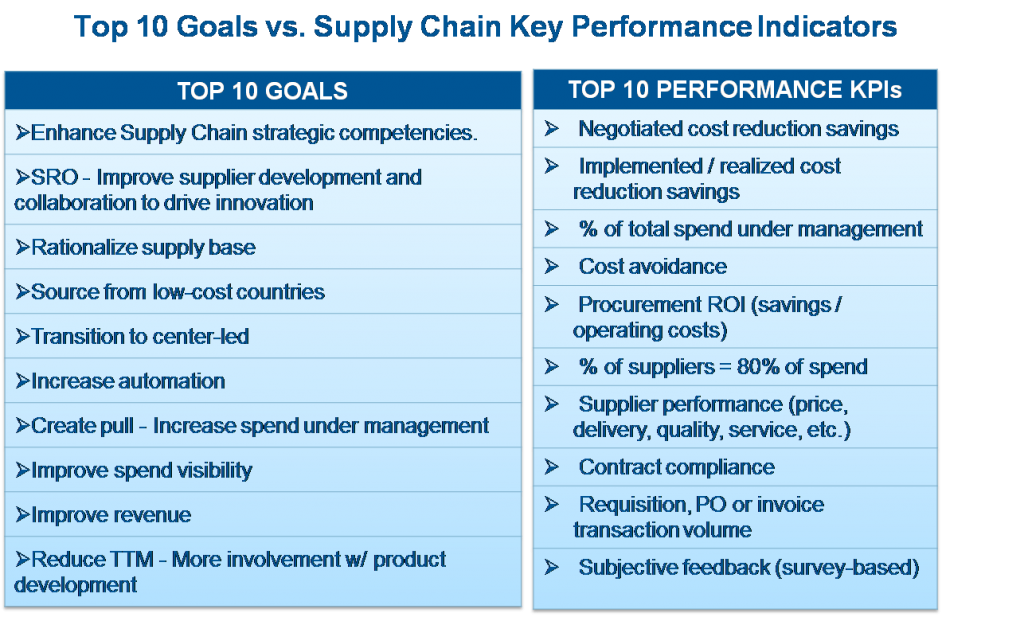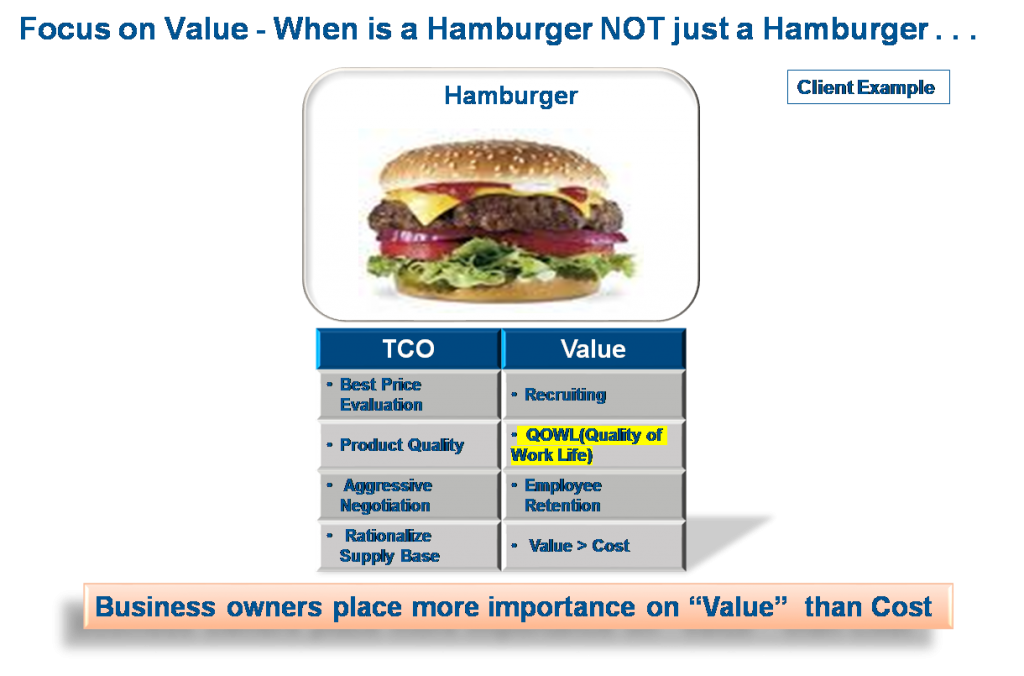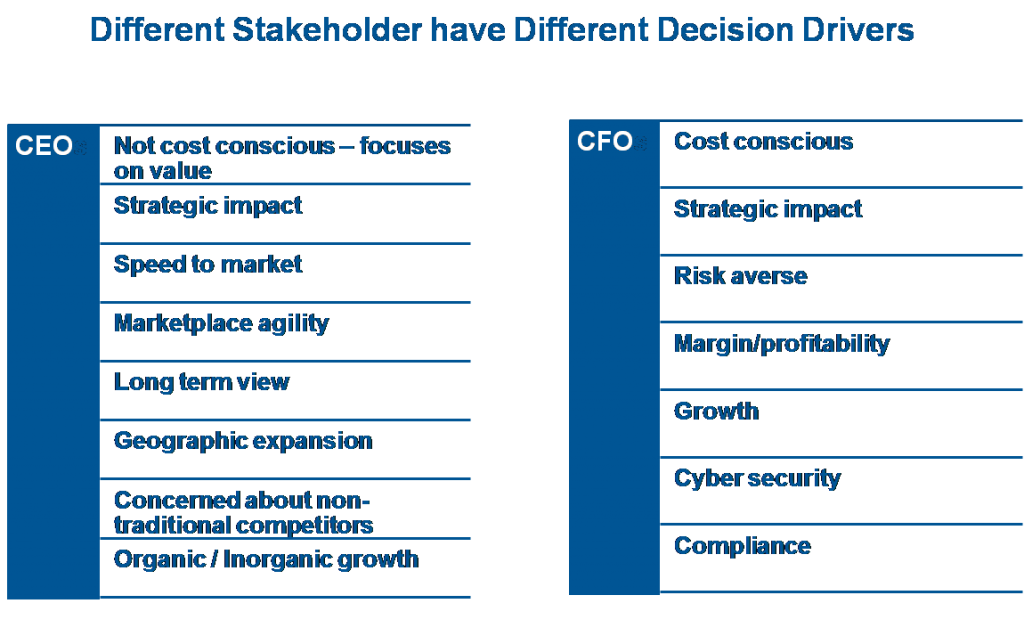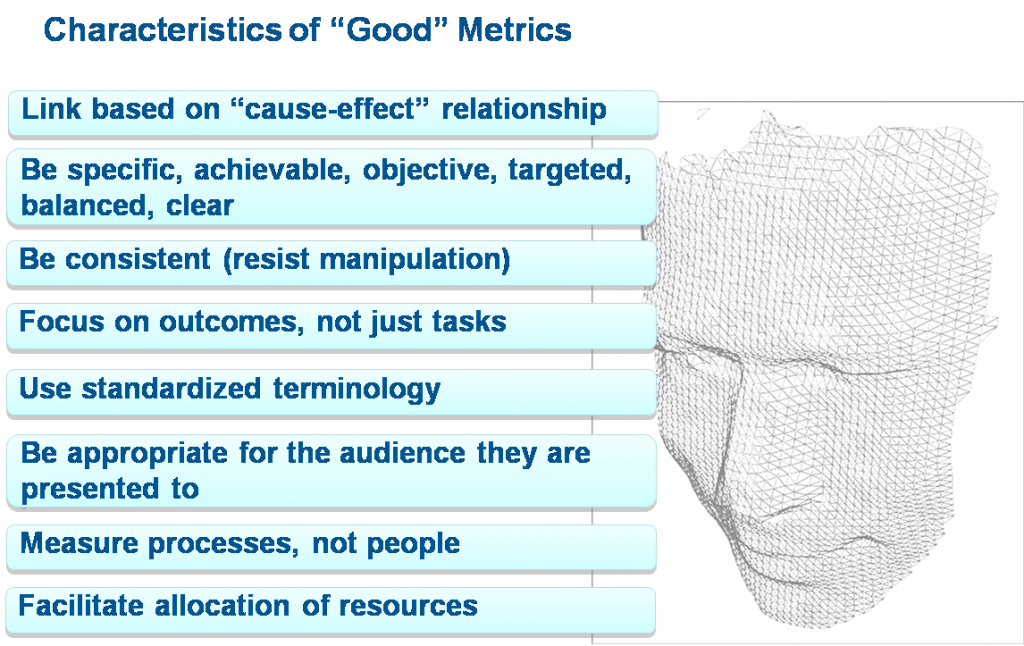This is perhaps one of the hardest discussions that we get into at various conferences and the discussion is always the same – regardless of where we are speaking in the world. Many people instinctively know that unless they can change the metrics they are measured on – nothing will change, and they are probably partially right. One of the easiest ways to change decision making and behaviors is to change metrics and one of the hardest things to do is to change metrics.
The reason why most Transformations fail is because they don’t pay attention to changing the metrics. Let me illustrate the point by the following:

You will notice that the left side consists of very lofty and strategic goals – very laudable for any sourcing organization. Yet, take a look at the metrics that these organizations are still using – they are all very tactical and transactional in nature. What chance do these organizations have of meeting or exceeding their goals with these kinds of metrics in place? The problem is far more significant than that – imagine how the BUs and stakeholders view these types of organizations who continue to measure the number of POs they process? What chance do these sourcing organizations have of ever being viewed as a strategic advisor or business partner? How do you convince the Head of HR that you are a strategic business partner when you talk to her about the recent Food Services sourcing event and point out the money you saved her (your metric) when getting that savings meant reducing employee Quality of Work Life (her metric)?

The left side represents traditional sourcing type metrics and the right side is what the stakeholder cares about. And by the way, different executive stakeholders have different Value Drivers. Here is a simple example of that:

This often leads to a discussion about what are good metrics and here is the slide I often use to answer that question:

Most of these points are fairly common sense but often ignored. Ensuring a causal relationship in your metrics is key (thus avoiding the post hoc ergo propter hoc trap). The other trap is the myth that value is always quantifiable and that’s fundamentally not true. Therefore, metrics don’t always have to be measurable in the traditional sense of the word. And typically, the non-quantifiable components of Value are far more powerful in influencing decisions and behaviors.
In addition, you must shape the right behaviors and competencies required to achieve the metric targets:
- Link compensation and rewards to the individual’s contribution to organizational and team performance
- Tie opportunities for salary increases to what assists the team, work center and the organization become more successful
- Recognize top performers
- Verify the performance measurement system is administrated consistently
- Clearly define and communicate performance measures and tools used to evaluate individuals, teams and the organization
A Transformation Roadmap is not complete unless it also addresses metrics. Without a change in decision making and behaviors, no Transformation will ever be successful and modifying decision making and behaviors requires modifying metrics. This is typically the most challenging component of any Transformation with different executive stakeholders demanding different metrics. Solving this requires the highest levels of strategic competencies.


1 Comment
Pingback: Why Did the Chicken Cross the Road? - News You Can Use